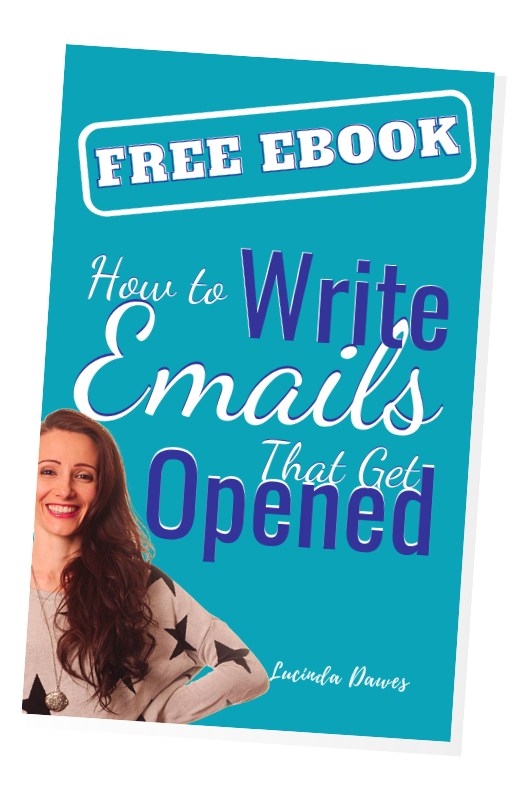When I was at school, long before I even knew what a website copywriter was or that writing for the web would be an actual job, I had two English teachers.
They could not have been more different.
Mrs C was dull. Her lessons were boring and I remember her monotone voice going on and on for what felt like hours. I can barely remember anything she taught us.
Not like Mr S. His lessons were brilliant and I remember every single book we read over the two years he taught me!
What was the difference? The F word.
No – he didn’t swear. He made the lessons FUN.
Here’s what I mean.
He injected his personality into every single lesson and we loved him for it. He didn’t talk down to us or use academic speak. He met us where we were, conveyed his passion for his subject, and taught us how to love Shakespeare, Austen and Pinter.
It’s not what you say, it’s the way you say it.
Unless you’re a website copywriter, you might not realise that when it comes to writing for the web, you don’t need to use formal language.
Now, as a web content writer, I understand how important it is to keep people interested in what you have to say. In fact, when it comes to writing for the web, the most important job is to keep people reading.
If you’re anything like me, you’ll have been taught all kinds of rules at school about how you *should* write.
Things like ‘never start a sentence with AND or BUT. Don’t abbreviate words. Never use slang.
When I first started as a web content writer it was much easier – you didn’t need to worry about being fun, witty or engaging because the key to SEO web copywriting was stuffing your pages full of keywords so that your website would rank higher in Search Engines.
But that doesn’t work anymore.
It’s not enough to repeat keyword after keyword – you have to keep readers engaged.
And bored readers don’t engage, they leave. In other words, Google got smart!
Now I offer content writing services for websites and no matter who I write for, tone of voice is one of THE most important factors.
Whether you’re writing for the web yourself or hiring a website content writer, my advice to you is this.
Lose the rule book.
And start dropping F bombs ( FUN bombs) all over your web pages.
Here’s how…
Write How You Speak
When you’re chatting to a friend in the coffee shop, you speak in your everyday voice. This same, relaxed and natural tone is the language you should use in your writing.
It’s how we’re used to conversing so it’s easy to read and understand.
You don’t necessarily use whole words or totally grammatically correct sentences either.
You might say things like “I was gonna eat some cake” rather than “I was going to eat a slice of cake”.
Avoid ‘professional speak’ too.
There’s some kind of writing phenomenon that means as soon as people sit down to write they all become middle-aged, suit-wearing experts who use only the most formal and technical language in order to appear “professional”.
Stop it.
Use the language that people can relate to and understand.
Take your suit and tie off, pop your website content writer hat on and write in the way you speak.
Record Yourself
Using formal language and structure is a hard habit to break – especially if you’re just starting out writing for the web.
One easy trick to help is to use your voice memo app on your smartphone and record yourself saying what you want to express and then transcribe that.
Edit out any waffle and all the ‘umms’ and ‘errs’ – there’s no need to be too natural!
Have A Fake Interview
When I’m starting out with a new client as a website content writer, I interview them and record it.
This way I get to hear everything they want to say without furiously scribbling notes AND I get an accurate record of their tone of voice.
Why not ask a friend or colleague to do this with you?
Then you can simply watch your own video interview to create your article.
There are lots of free softwares that can do this for you. I like to use Zoom, but Skype would work too.
Use short paragraphs.
And sentences.
They are easier to read and they help to break up your content.
This has the added bonus of keeping these skim-readers engaged too!
Break The Rules
Feel free to start sentences with AND and BUT. Because that’s how you would speak normally.
Honestly, as a web content writer you can break ALL. THE. RULES. As long as it works for your target market.
Remember, this is about keeping your readers reading. It’s about being fun and engaging. It’s about speaking in your own voice. And trust me – your old English teacher isn’t going to mark your work.
Use The Right Words
Change the language and words you use to suit your audience.
If you’re writing web content aimed at the elderly looking to plan their funeral, you wouldn’t use phrases like ‘Netflix and chill.’
But if you’re writing for older teenagers looking for University courses, you probably would.
Take time to think about WHO is reading your web content and write with them in mind.
To put it simply, use the words your reader uses.
Write For One Person At A Time
You can’t write for everyone. It just doesn’t work.
If you’re writing for self-employed mums in their 30s, trying to also appeal to retired males who were in the military just won’t work.
You will get better results from your web content when your reader feels you understand them.
So what do you do if you have more than one target market? What if you need to talk to both mums in their 30s and retired military men?
Segregate.
Have one web page tailored to the mums and one to the men. You can’t kill two (very different) birds with one stone.
Entertain Them
Now don’t panic. You don’t have to try and be a comedian.
You can entertain your readers just by being you.
Tell them stories – about you, your business, your life. Make it relate to something you want them to learn or understand. They will naturally be interested in you so use that to your advantage.
Keep things interesting and relevant and if you can make them laugh, that’s even better.
Warning: If you’re not naturally witty, it’s probably best not to try to be funny. There’s nothing worse than unfunny funny stuff.
Be Authentic
Authenticity is a bit of a buzz word just now, but that doesn’t make it any less valuable.
Be authentic – be true to yourself – in your blog posts and let people get to know you.
By allowing people to see who you really are, by being a little bit vulnerable, you let people get to know you and like you.
And we all know that people buy from people that they know, like and trust.
I love being a website copywriter.
And I can’t help but think Mr S and his English lessons played a big part in this. But I know that not everyone finds it as enjoyable as I do. Which is why I offer content writing services for websites as well as courses for people who want to learn how to be a web content writer themselves.
So now you’ve got a couple of pointers to help get you started, keep practicing, practicing, practicing and keep reading other people’s blogs.
The more you practice and the more good content you read, the better you’ll become.
Want to learn more about how to make your website content awesome? Check out my other blog post…
“Writing For The Web- Everything You Need To Know To Write Awesome Content in 2020”
FREE EBOOK
HOW TO WRITE EMAILS THAT GET OPENED

If you liked this post, then you’ll like these too…
How to Write Emails That Sell More Stuff
What are you doing to sell your services or products? You have a shiny, modern website, right? It has an up-to-date shop with a great user experience? And you have regular blogs going up that are engaging and filled with SEO? That’s great. What about emails? I saw you...
How Much Should You Expect To Pay For Email Marketing?
Everyone likes a low-cost, high-return purchase. And that’s why marketing consultants are quick to sell you on the multitude of benefits of email marketing! It’s short, requires very little technical knowledge to get set up and can improve your customer retention like...
Inbound Marketing Vs Outbound Marketing – The Pros & Cons Of Both
Let’s be honest - the ‘Skip Ad’ button is one of the best things since sliced bread. Over time, marketers have learned that people don’t always like to be interrupted. Sometimes, you just want to watch your damn video! That’s how the ‘inbound marketing vs outbound...

Free Website Content Checklist.
Not getting the results you want from your website? It could be that your content is the problem.
Click the button below and we’ll send you our website content checklist so you can see how your copy measures up!





